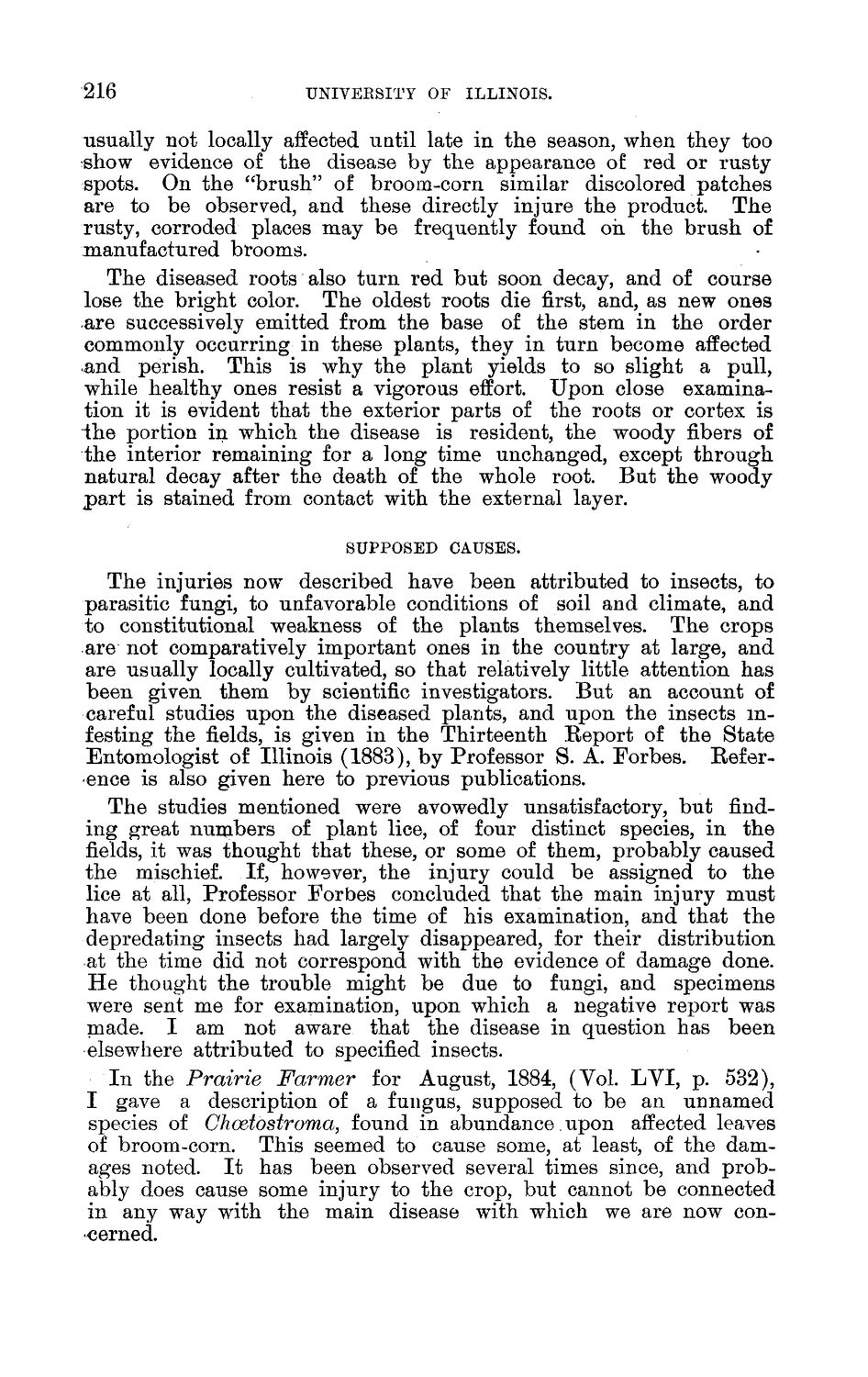| |
| |
Caption: Board of Trustees Minutes - 1888
This is a reduced-resolution page image for fast online browsing.

EXTRACTED TEXT FROM PAGE:
216 UNIVEESITY OF ILLINOIS. usually not locally affected until late in the season, when they too «how evidence of the disease by the appearance of red or rusty spots. On the "brush" of broom-corn similar discolored patches are to be observed, and these directly injure the product. The rusty, corroded places may be frequently found oh the brush of manufactured brooms. The diseased roots also turn red but soon decay, and of course lose the bright color. The oldest roots die first, and, as new ones are successively emitted from the base of the stem in the order commonly occurring in these plants, they in turn become affected and perish. This is why the plant yields to so slight a pull, while healthy ones resist a vigorous effort. Upon close examination it is evident that the exterior parts of the roots or cortex is the portion in which the disease is resident, the woody fibers of the interior remaining for a long time unchanged, except through natural decay after the death of the whole root. But the woody part is stained from contact with the external layer. SUPPOSED CAUSES. The injuries now described have been attributed to insects, to parasitic fungi, to unfavorable conditions of soil and climate, and to constitutional weakness of the plants themselves. The crops are not comparatively important ones in the country at large, and are usually locally cultivated, so that relatively little attention has been given them by scientific investigators. But an account of careful studies upon the diseased plants, and upon the insects infesting the fields, is given in the Thirteenth Report of the State Entomologist of Illinois (1883), by Professor S. A. Forbes. Eeference is also given here to previous publications. The studies mentioned were avowedly unsatisfactory, but finding great numbers of plant lice, of four distinct species, in the fields, it was thought that these, or some of them, probably caused the mischief. If, however, the injury could be assigned to the lice at all, Professor Forbes concluded that the main injury must have been done before the time of his examination, and that the depredating insects had largely disappeared, for their distribution at the time did not correspond with the evidence of damage done. He thought the trouble might be due to fungi, and specimens were sent me for examination, upon which a negative report was made. I am not aware that the disease in question has been elsewhere attributed to specified insects. In the Prairie Farmer for August, 1884, (Vol. LVI, p. 532), I gave a description of a fungus, supposed to be an unnamed species of Choeiostroma, found in abundance upon affected leaves of broom-corn. This seemed to cause some, at least, of the damages noted. I t has been observed several times since, and probably does cause some injury to the crop, but cannot be connected in any way with the main disease with which we are now concerned.
| |